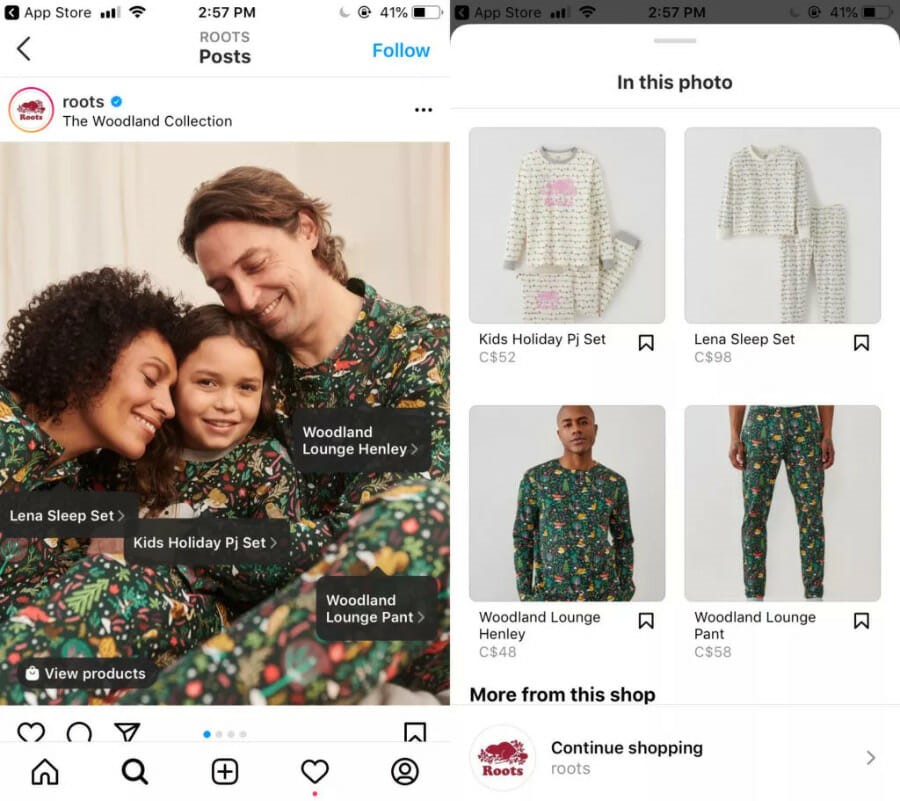Logistics
Warehousing & Fulfillment
Transportation
E-commerce
E-commerce Fulfillment Services
Lease & Maintenance
Semi Trucks
Supply Chain Technology
Logistics
E-commerce
Lease & Maintenance
Buy Used Trucks

Less than a decade ago, holiday shopping meant heading to your local shopping mall or browsing legacy department stores. But the product discovery process in the era of e-commerce and social media couldn't be more different.
Where brick-and-mortar storefronts once represented the starting point of the customer journey, we're undergoing a major pivot towards digital channels as a primary source of gift inspiration.
According to JLL’s Holiday Shopping Survey Report for 2023, 76.6% of U.S. consumers plan to shop online for gifts this holiday season. Furthermore, social media platforms score highly as places for product discovery, with Facebook (35.8%), Instagram (32.7%), YouTube (24.1%), and TikTok (23.4%) the preferred locations for product discovery efforts.
As product discovery moves online, social media-savvy brands have a valuable opportunity to entice new and existing customers to shop for gifts. Instead of trying to attract prospective customers to your physical or virtual store, you can display products where people already searching for gift ideas – your social channels.
Product discovery in retail refers to how customers can find and compare products that fit their needs and preferences. In short, it's a measure of how easily shoppers can navigate a brand's shopping experience to discover products either in-store, online, or via social media channels.
Because effective product discovery marks the beginning of a customer journey that will hopefully result in a sale, robust product discovery opportunities are vital to drive sales and build brand loyalty. However, what product discovery looks like is rapidly changing as consumers migrate to new shopping channels.
The rise of digital commerce has seen consumers gravitate to tools such as online search and product recommendations to find and compare products. But there's another new kid on the block that's rapidly changing product discovery: Social commerce.
Being able to search, browse, and buy products natively within apps like Instagram and TikTok has made product discovery even more personalized and direct. According to McKinsey's 2021 holiday shopping study, 58% of consumers say that social media will influence their holiday buying decisions – a figure that rises to 83% and 87% for Millennial and Gen Z consumers respectively.
In fact, 54% of Millennials and Gen Zers surveyed believe that social media platforms are better places to discover new products and brands than online search - a channel that behemoths like Amazon and Walmart have traditionally dominated.
So, what does this shift in the product discovery stage mean for emerging brands who are fighting for visibility during the holiday season?
Consumers are flitting between brands much more than they did in the past - and especially during major promotional events. Nearly a fifth of shoppers say they purchase from stores on Black Friday that are different from those they use during the rest of the year.
Thanks to inflation pushing up product prices, consumers are much more likely to experiment with new brands and products in a bid to secure the best deals. According to McKinsey, 66% of consumers list prices and promotions as their top consideration for holiday shopping in 2023, compared with 59% in 2022. In sum, tighter spending is pushing consumers to search for alternative options this holiday season – and this is your advantage.
Most of us have made a purchase online that turned out to be a disappointment. While this is frustrating for everyday purchases, it's something we want to avoid at all costs when buying gifts during the holiday season.
This is where social commerce has developed as a way for consumers to assess potential purchases by kind of the feedback they receive. Did you know that almost a quarter of millennials and Gen Z say that a large volume of likes or positive comments on social media would make them more likely to buy a product?
In some, social media platforms act as one giant engine for generating social proof. By matching product discovery opportunities with customer feedback, consumers are much more likely to trust your brand and initiate a purchase.
It's easy to think of the product discovery process as totally organic. So, it can seem difficult or impossible to ‘stage' these opportunities for potential customers without coming across as salesy or inauthentic.
But social commerce, just like e-commerce fulfillment at large, relies on brands being able to cut through the noise and curate attractive offerings for their customers. If you do this successfully, you can remove friction from the gift-buying process and boost your share of social commerce sales.
Put simply, if your social media content is valuable and relevant to your audience's seasonal needs, you can increase the amount of product discovery opportunities available to potential customers.
So, let's take a look at some ways that e-commerce brands product discovery during the holidays:
According to Google, 57% of shoppers say they look for helpful recommendations or suggestions when purchasing gifts. This is why holiday gift guides are the perfect tool to assist customers with finding the perfect gift for a loved one.
It's easy for a brand to compile a list or PDF of 'top 10 gifts under $20'. But it's your product discovery strategy that separates an average gift guide from one that truly provides value to your customer.
If your gift guide is only housed on your website or as a print catalog, this relies on potential customers walking into your store or finding the right link. This does little to attract those who aren't already familiar with your brand.
Bringing your holiday gift guide into the social commerce realm enables your followers to share it with friends and family, as well as enabling holiday shopping on the go:

Nordstrom shares a variety of holiday-themed gift guides on Instagram, offering shoppers extensive visual search options. Their Stories target a variety of audience segments, from pet owners to beauty lovers. This makes it convenient and appealing for shoppers to browse, boosting engagement across social platforms and driving holiday spending.
The key reason for the growing popularity of social commerce is that it removes friction for mobile-first consumers. They no longer have to be redirected from social media profiles to e-commerce sites to complete a purchase, which saves valuable leads from falling out of your sales funnel in the transition.
Imagine if every product featured in your gift guide is tagged so customers can switch seamlessly to viewing products inside the app. When a purchase can be made with just a few taps on a mobile device, this makes it easier than ever for customers to close the deal.

Apparel brand Roots uses product tags to promote its holiday season PJ range via its Instagram shop, making it easy for shoppers to browse items directly within the app.
There's a common misconception that consumers find hashtags annoying or distracting. In fact, the introduction of the humble hashtag can turbocharge the product discovery process.
Put simply, hashtags allow us to filter through the noise and find relevant topics on social platforms. Despite this, hashtags remain a massively underutilized tool by retailers to drive product discovery on social platforms. Common mistakes include:
Instead, think carefully about what your target audience is likely to be searching for this holiday season, and what hashtags are likely to be used. You'll want to use a mixture of seasonal and branded hashtags, in addition to product-specific hashtags that accurately describe the subject of your posts.

Makeup brand Clarins drives product discovery on Instagram during the holidays by using just three well-targeted hashtags on their post. #GiftSet and #MakeupGifts help to drive shoppers to their feed who are actively looking for these categories, while #ChristmaswithClarins is a great drawcard for their loyal customers.
Cross-selling and product bundling are invaluable tactics to boost conversions and Average Order Value during the holiday season. Presenting related or complementary products together helps to streamline product discovery and enables consumers to find suitable gifts more quickly.
Product bundling and cross-selling shouldn't come across as blatant product ads, but as genuinely inspirational content that aids the customer journey and sparks fresh gift ideas.

John Lewis has done a great job of curating attractive room set-ups on social media that promote new products within its holiday collection. By grouping products that complement each other within the same post, consumers are more likely to buy multiple items. This baking-themed post provides shoppers with all the equipment they need to make a delicious Christmas pudding!
With more consumers now choosing to browse and shop directly via social media channels, it makes little sense to push a shopper away from their chosen social platform in search of customer service help. For one, it's not convenient for your customer. Moreover, you already have a perfectly good customer support tool right at your fingertips.
Greater digital connectivity means that customers expect brands to interact with them across all channels – and this includes social commerce. 40% of holiday shoppers say that they're more likely to buy from a brand they can message directly from within a social media platform.
Social media customer service isn't just about providing great customer care; it's also about fanning interest in your products. Securing a sale means striking while the iron is hot, and the immediacy of social media can assist you in closing the deal.
So, what exactly does customer service in social commerce look like?
AI might seem like an overused buzzword, but there are few parts of e-commerce and retail that AI can't enhance - and this includes product discovery. All of the ways that shoppers traditionally search for products, such as online search, recommendations, and targeted ads, can be boosted with AI.
For example, the humble search function can go beyond matching keywords or phrases when combined with machine learning. AI models can be trained to understand things like user intent or sentiment, improving the accuracy and relevance of product discovery.
Furthermore, consumers are showing an increasing willingness to use AI in their shopping journeys, with A recent consumer survey from Constructor finding that 42% of participants would be 'very' or 'somewhat' comfortable using a tool like ChatGPT on a website to find suitable products.
A well-honed product discovery strategy is important at any time of the year, but especially during the holiday season when consumers are more willing to seek out new brands and gift ideas. By making the effort to curate engaging, creative holiday content, you can drive greater brand awareness and conversions.